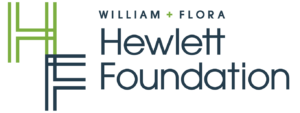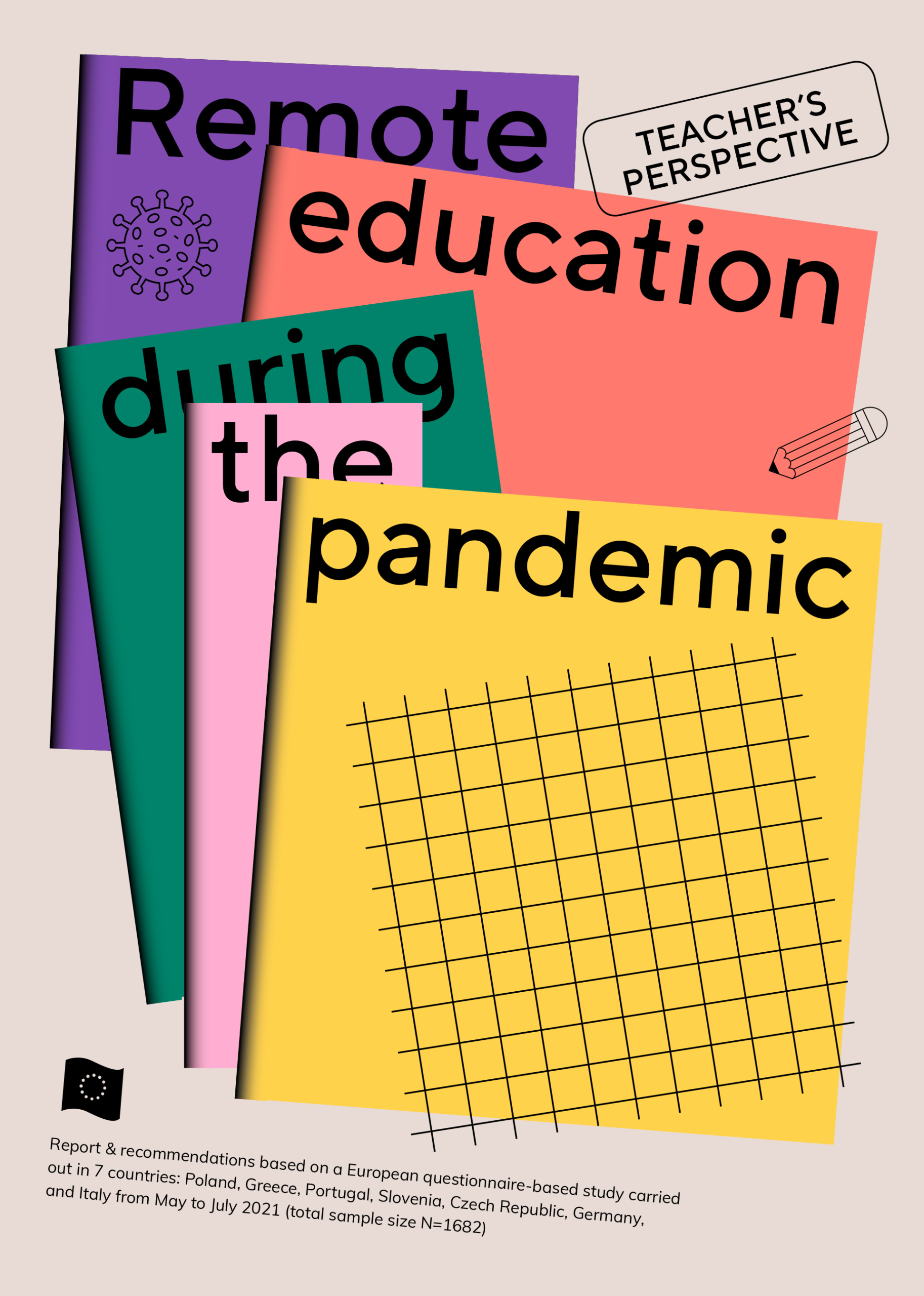
A study conducted by Centrum Cyfrowe and Communia
At the beginning of 2021, we decided to conduct questionnaire-based, exploratory research in 7 European countries (Poland, Germany, Greece, Portugal, Italy, Czechia and Slovenia) on teachers’ practices in remote education.
Our study paints an image of a high level of adoption of digital solutions and resources across Europe, which furthermore increased over time. With regard to types of platforms and tools used, our survey shows both the dominant role and ubiquity of those provided by the greatest commercial providers and online platforms. Despite the reliance on those platforms, content used by teachers is predominantly of non-commercial nature, or even peer produced. Lastly, our study suggests high levels of adoption of Open Educational Resources across Europe.
With our study, we aim to provide evidence on content usage that can help shape both copyright policies and programs that support the development and funding of public educational content and platforms.
Download
We encourage all researchers and institutions to use our methodology and research tools for further research – you can download our questionnaires in 8 language versions, all charts and diagrams in .png version and spreadsheets with collected data.
Watch the presentation
Conclusions and recommendations
Based on European questionnaire-based study carried out in 7 countries: Poland, Greece, Portugal, Slovenia, Czech Republic, Germany, and Italy from May to July 2021 (total sample size N=1682)
- Teachers repurpose a wide range of copyrighted works for remote education, mostly freely available works that are not intended for the educational market – it is crucial to ensure that broad copyright exceptions and limitations for education are in place to protect those uses
- Teachers use content that primarily functions outside of the educational context
- Teachers mostly use copyrighted materials in ways that do not affect the market for these materials
- Teachers favor copyrighted materials that are freely available online without payment
- Teachers informal collaboration networks played a significant role during the pandemic and constitute one of the key pillars of online teaching – it is important to support them on many levels
- Teachers mostly depend on tools delivered by the biggest tech companies – it is crucial to make sure that open and free cooperation, collaboration, co-creation and exchange are possible without dependence on commercial platform providers
- Remote education was to a great extent supported by Open Educational Resources (more than half of the teachers use OER on a regular basis) – it is crucial to ensure further development of policies supporting the development of high-quality open resources and practices.
Key findings
Usage of free & paid digital resources
Almost every teacher in the 7 surveyed countries has used freely available, unpaid resources during the time of remote education – 96% on average. This number drops significantly when it comes to paid, subscription-based resources – only 35% of teachers have used paid resources. The percentage differs in surveyed countries – in Greece and Portugal using paid resources was less common (24% and 28%) while in Germany and in Czechia teachers more often have made use of this kind of resources (53% and 43%).
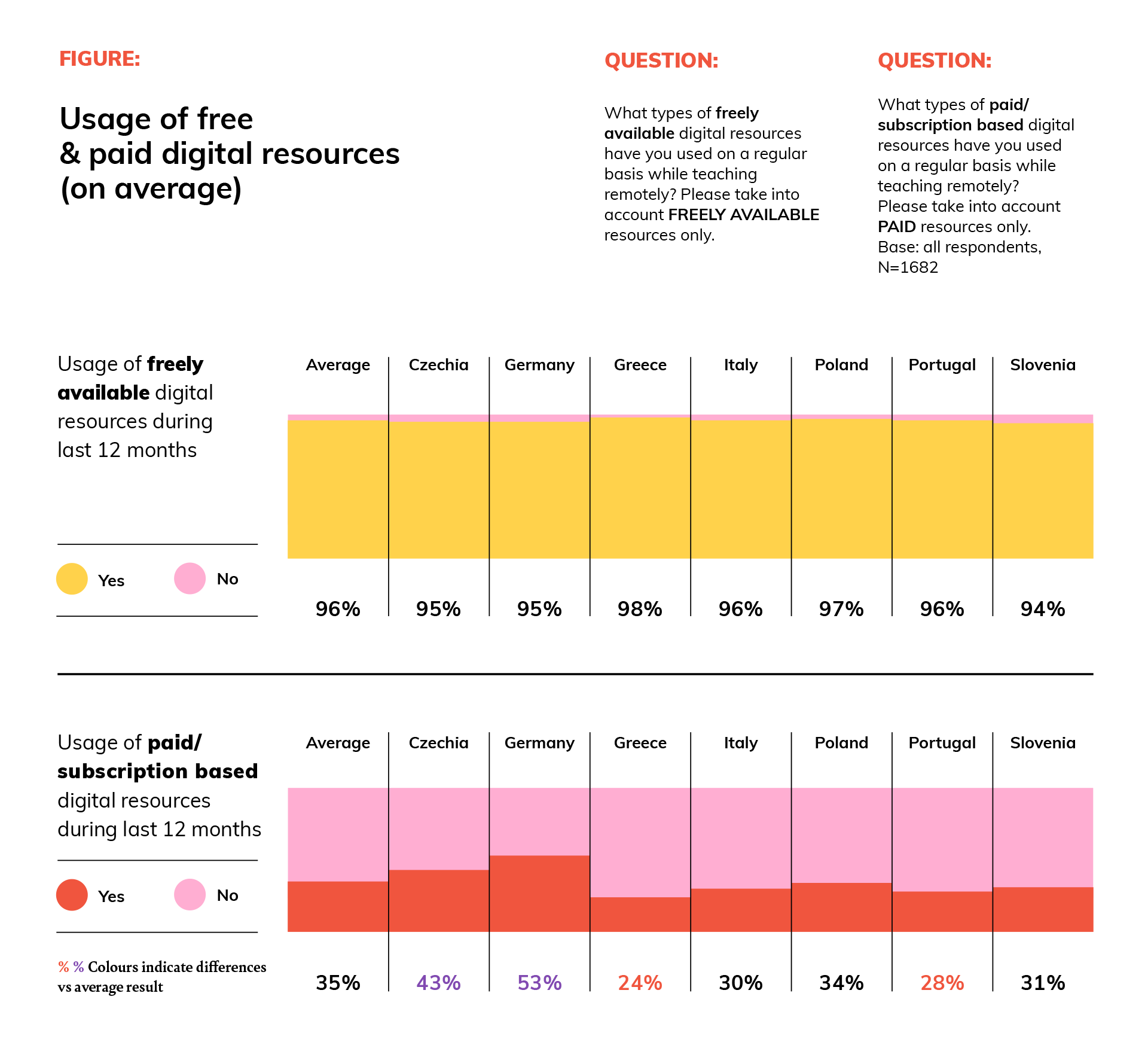
Open Educational Resources
More than half of the teachers on average have heard about the concept of Open Educational Resources (52%). This high level of awareness is further confirmed by an additional question: after being exposed to a simple definition of Open Educational Resources 54% of the teachers claim that they have regularly used this type of resources during the time of remote education.
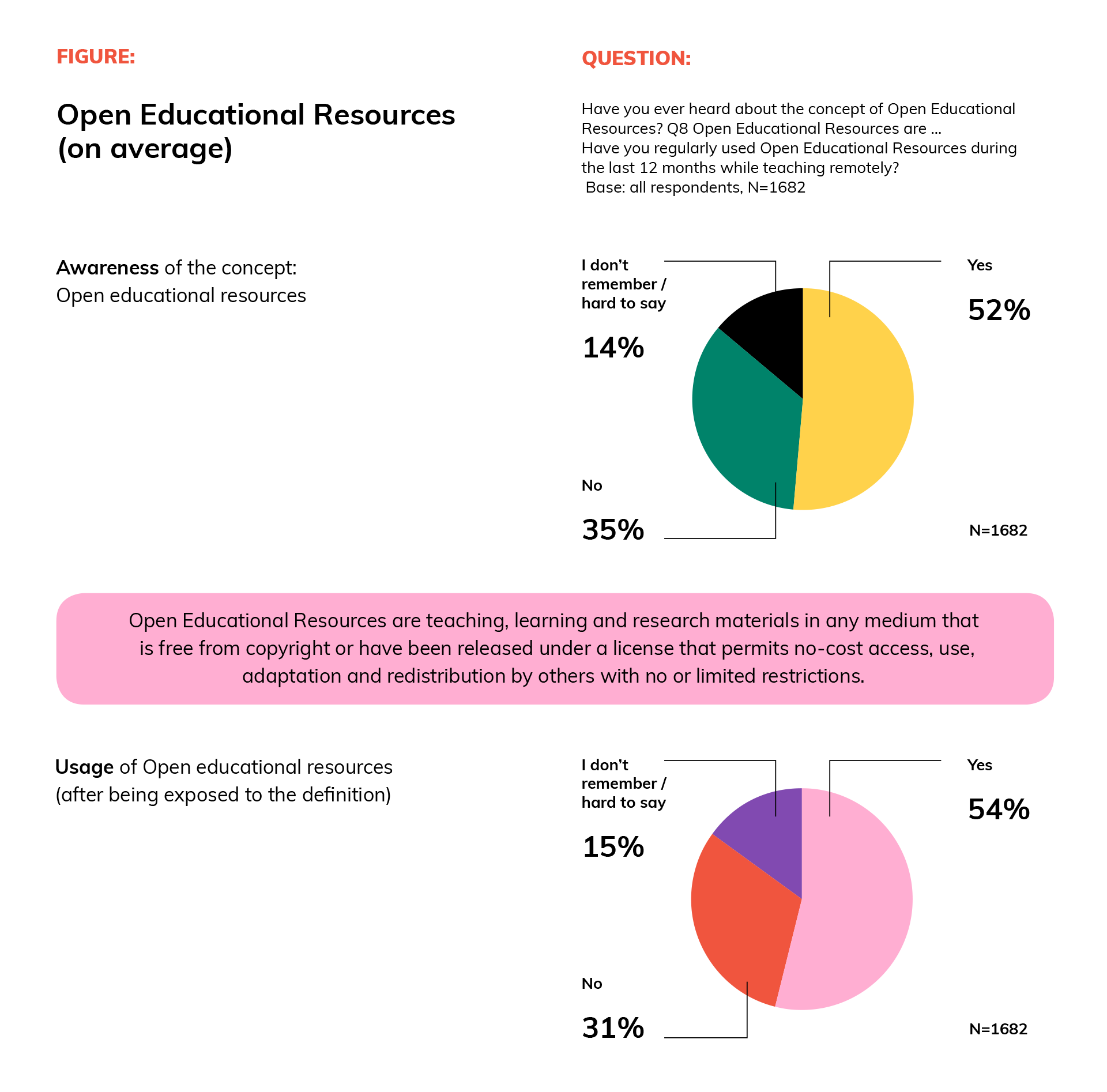
The longer the period of remote learning for teachers, the greater number of teachers have heard about the concept of Open Educational Resources (over 12 months – 64% on average).
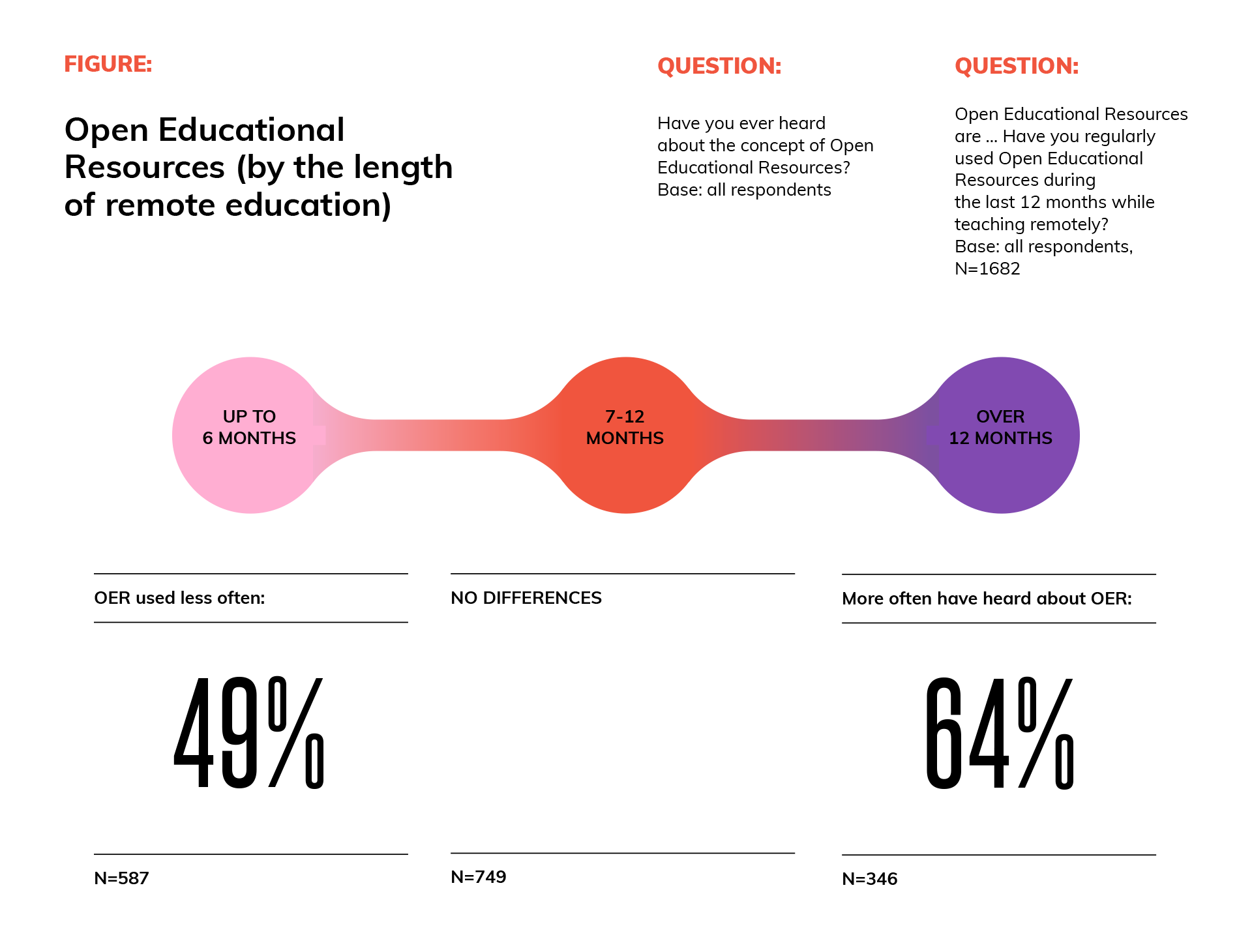
Tools & platforms usage
97% of teachers in surveyed countries have used platforms that enable live online classes (synchronous education). These platforms are commercial tools delivered by the biggest American tech companies (Google Classroom – 31% on average, Microsoft Teams – 41%, Cisco Webex and Zoom – up to 53%). On average, teachers have used almost 5 different platforms and tools during the time of remote education.
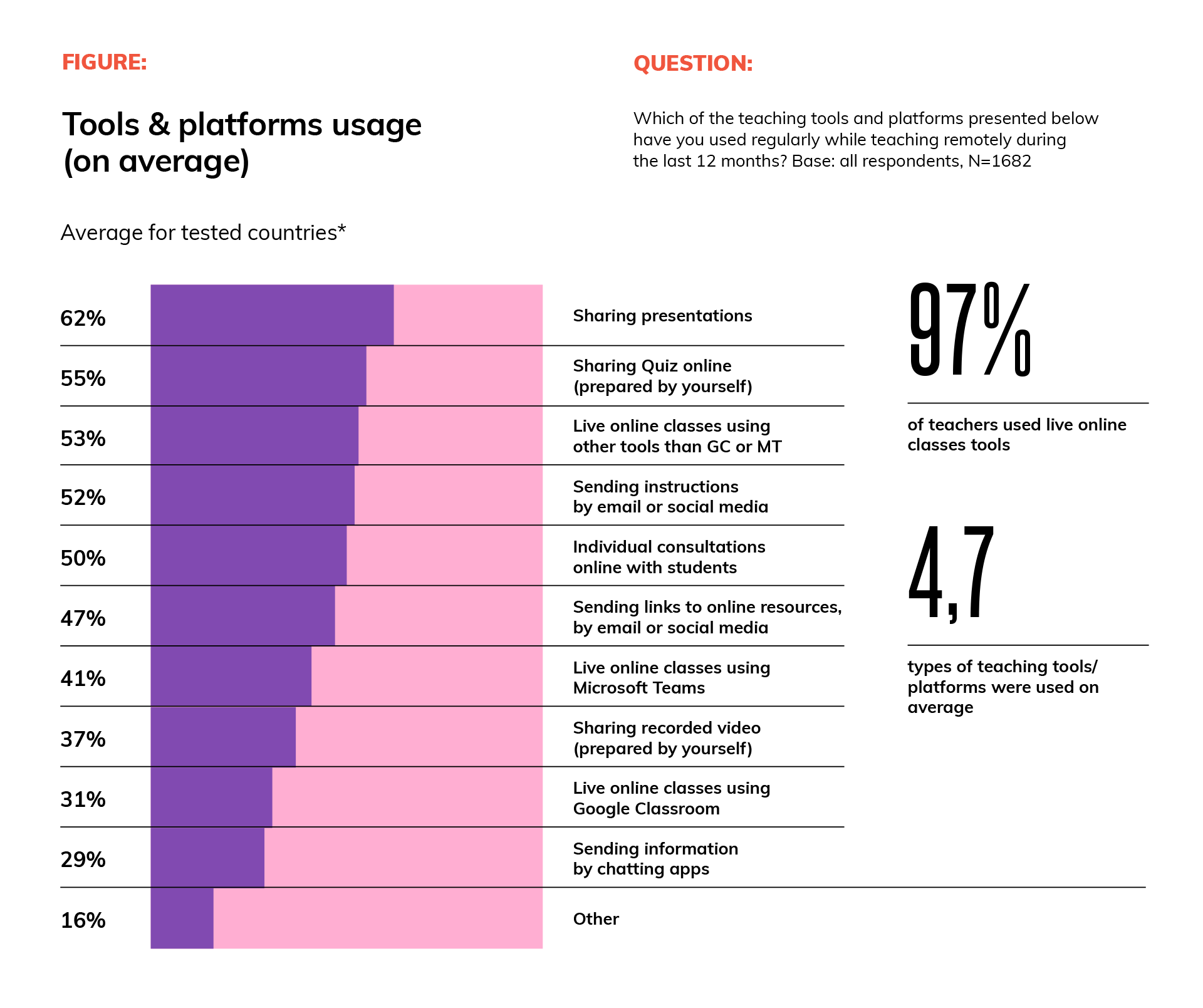
License
To the extent possible under law, all parties involved have waived all copyright and related or neighbouring rights to this publication. You can copy, modify, distribute, communicate and make the publication available to the public, even for commercial purposes, all without asking permission.
Recommended attribution:
Magdalena Biernat, Agnieszka UrbaЕ„ska, Teresa Nobre, LL.M., dr. Alek Tarkowski, dr. Maja Bogataj LL.M., LL.M., Remote education during the pandemic: the teachers’ perspective, 2021, https://centrumcyfrowe.pl/remote-education-during-the-pandemic, CC0
Authors
Authors: Magdalena Biernat, Agnieszka UrbaЕ„ska, Teresa Nobre, LL.M., dr. Alek Tarkowski, dr. Maja Bogataj LL.M., LL.M..
Research lead: Magdalena Biernat
Consultations: Aleksandra CzetwertyЕ„ska, Aleksandra Janus
Local help: Lucy Smolka (Czech Republic), Nikolaos Panagiotou (Greece), Matteo Uggeri (Italy), Dominik Theis (Germany), Paula Simões (Portugal), Dr. Maja Bogataj Jančič, LL.M., LL.M. (Intellectual Property Institute, Slovenia), Azra Jušić (Intellectual Property Institute, Slovenia)
Concept and methodology: Magdalena Biernat, Teresa Nobre, LL.M., dr. Maja Bogataj JanДЌiДЌ, LL.M.,LL.M., dr. Alek Tarkowski, Anahita Rezaei
Coordination: Anahita Rezaei & Magdalena Biernat
Contact
Magdalena Biernat
mbiernat@centrumcyfrowe.pl
Anahita Rezaei
arezaei@centrumcyfrowe.pl
